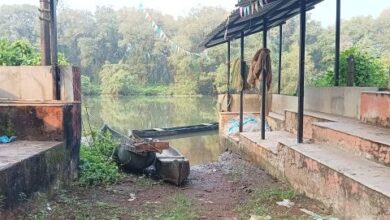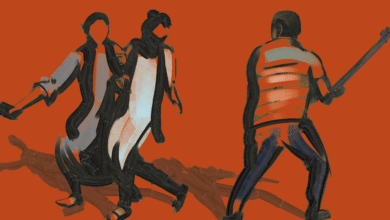Memorable food journeys, stories of identity & a sense of belonging
Every story in the collection is more than a personal anecdote; it is a story of the place, the people, the tradition, & the indigeneity of food practices

 When I first came to the North East, the country-wide food politics had already started. While the State was busy peering into our kitchens, and its bigots were deliriously stomping on the secular food choices, I was discovering a new world of unexplained gastronomical pleasures. My initiation was with Khasi cuisine — jadoh, doh jem, doh kleih, doh shain, doh snam, and the magical of all, tungrymbai.
When I first came to the North East, the country-wide food politics had already started. While the State was busy peering into our kitchens, and its bigots were deliriously stomping on the secular food choices, I was discovering a new world of unexplained gastronomical pleasures. My initiation was with Khasi cuisine — jadoh, doh jem, doh kleih, doh shain, doh snam, and the magical of all, tungrymbai.
Adding to this list of orgasmic explorations was Sylheti shidol — a piquant dry fish preparation that not only spices up the food but also satiates one’s soul. My ultra-sensitive olfactory nerve that once contorted with disgust at the smell of fish, both fresh and dried, now pined for a whiff of its newfound love every time I passed by the kitchen window of a humble Assam-type in a Bengali neighbourhood. My palate had been baptised.
As for me, I was an Alice in a wonderland of cuisines that were outrageously different from the ‘West Bengali’ platter that nourished me for more than three decades of my life. The kappa, wak gominda, axone, galho, sanpiau, eromba, or a simple platter of local sticky rice (I never liked rice in this texture until I came to the North East), boiled laipatta with beef and hot chutney — every dish in every northeastern state made me believe that, indeed, “there is no sincerer love than the love of food” (Man and Superman).
So, when I picked up Food Journeys: Stories from the Heart, it was a conscious choice; and when I read the names of the book’s editors — anthropologist Dolly Kikon and researcher Joel Rodrigues — I succumbed to the delectability that the book lured me with.
MORE BOOK REVIEWSMy cooking skills border on infamy, but my kitchen has a curious collection of ingredients — from a West-Bengali kitchen’s quintessential posto (poppy seeds), a northeastern kitchen’s undeniable star, fermented bamboo shoot, to a Goan kitchen’s must-have, kokum. I instantly knew that my food journey through the book would be fulfilling.
Now that I make an effort to review the book, I find a reason to share my food story and connect the food dots from West to North East in my own way.
Politics of food, an ‘alienation’ story & resistance
 The northeastern food is a story of alienation, much like the region and its people. To say ‘northeastern food’ in itself is alienating each tribe’s unique cooking culture. Through food comes complete acceptance of a community, culture and lifestyle. While the rest of the country understood the geopolitical importance of the region sooner than expected, the acceptance of the region’s food habits had been insincere and forced. The good news is that the mindset is changing, and social media is playing a key role in spreading this food awareness.
The northeastern food is a story of alienation, much like the region and its people. To say ‘northeastern food’ in itself is alienating each tribe’s unique cooking culture. Through food comes complete acceptance of a community, culture and lifestyle. While the rest of the country understood the geopolitical importance of the region sooner than expected, the acceptance of the region’s food habits had been insincere and forced. The good news is that the mindset is changing, and social media is playing a key role in spreading this food awareness.
As Hoihnu Hauzel rightly points out in her food story, “What we eat is what we are and how we eat is who we are,” one has to understand the ‘what’ and ‘how’ and accept them to embrace the people. Hauzel’s story is about rediscovering one’s roots and bringing tradition and modernity closer by the day.

And that is becoming possible as the regional politics of food have been transforming into a more generation-friendly outlook. That is reflected in Hamari Jamatia’s article based in Tripura. The Hindu royalty’s staunch beliefs and practices have given way to a more liberal food palate among Hindus in the state.
The stories of food in the book are also about resistance, like the one narrated by Ronid Akhu Chingangbam, a popular musician from Manipur. His story is more about internal struggle and an intra-state conflict. As Akhu reminisces about his gastronomical journey through childhood, he also narrates the stories of the inhabitants of the floating biomass on the Loktak that are locally called phumdi. Their story and struggles are an important part of his narration, because the existence of local aquatic flora and fauna — such pengba, nunga and heikak — is intrinsically associated with them.
Telling tales around the hearth


Every story in the collection is more than a personal anecdote of gastronomical excellence. It is a story of the place, the people, the tradition, and most importantly, the indigeneity of food practices that reveal the rich biodiversity of the region.
The stories of Juliana Phamgei, Yanbeni Yanthan and Babina Chabungbam, among others, are transcendent narrations of their respective states, localities and neighbourhoods. The anecdotes help readers understand food in the context of socio-economic history.
There are stories of food that are deep-rooted in violence and dark memories, such as Joel Rodrigues’, and the commingling of ethnicity, such as Rini Barman’s, and famines and hunger, such as Lalchhanhimi ‘Chhani’ Bungsut’s. There are also stories of personal journeys, such as the one by Gertrude Lamare and Dalarympei S. Kharmawphlang from Shillong.
Kikon’s narration of bamboo shoots and the collectors is of belonging and haunting memories. “The versatile bamboo shoot invites us to introspect the rupture between development policies and the social realities on the ground,” Kikon writes.
A collection to be treasured

The food on the table traverses a long course before it meets its destiny, my mother would often say in Bengali. I neither valued what she said nor respected the emotions that she poured into her cooking. Now, living away from home, I realise the value of those emotions which made even the simplest of food a delicacy.
The collection of stories in Food Journeys, published by Zubaan, does not miss the opportunity to talk about the ‘long course’. The painstaking method of collecting local ingredients, the fastidious methods of prepping the meat, vegetables and the fish before they meet their destiny, the expertise with which each ingredient in a brew is mixed, and the warmth of the hearth and hearts that add multiple dimensions to a simple recipe — these are the stories that need to be told.
The collection of unique recipes from the authors is a value addition for those readers who are not afraid to

explore the unknown. The book also has a photo-essay by Late Tarun Bhartiya that depicts street tales of food and life in Shillong.
The book is an important addition to one’s collection of northeastern history and the region’s socio-economic evolution. It helps readers from outside the region understand the context and culture that inspire a unique palate, and acknowledges the fact that “Food… is a source of human connection and continuity” (Ningreichon Tungshang).
Book: Food Journeys: Stories from the Heart; Editors: Dolly Kikon and Joel Rodrigues; Publisher: Zubaan; Pages: 344; Price: Rs 1500





